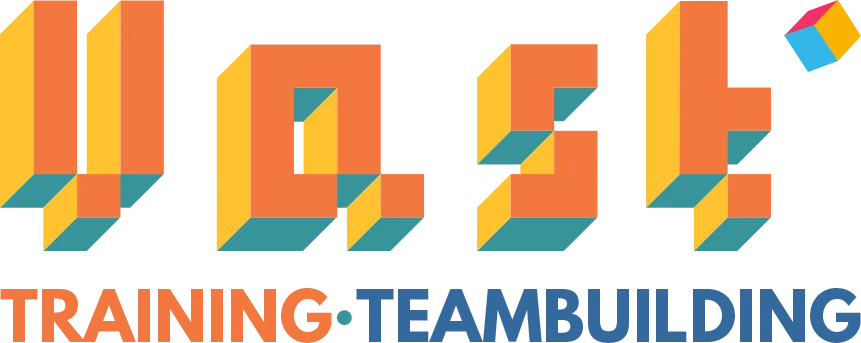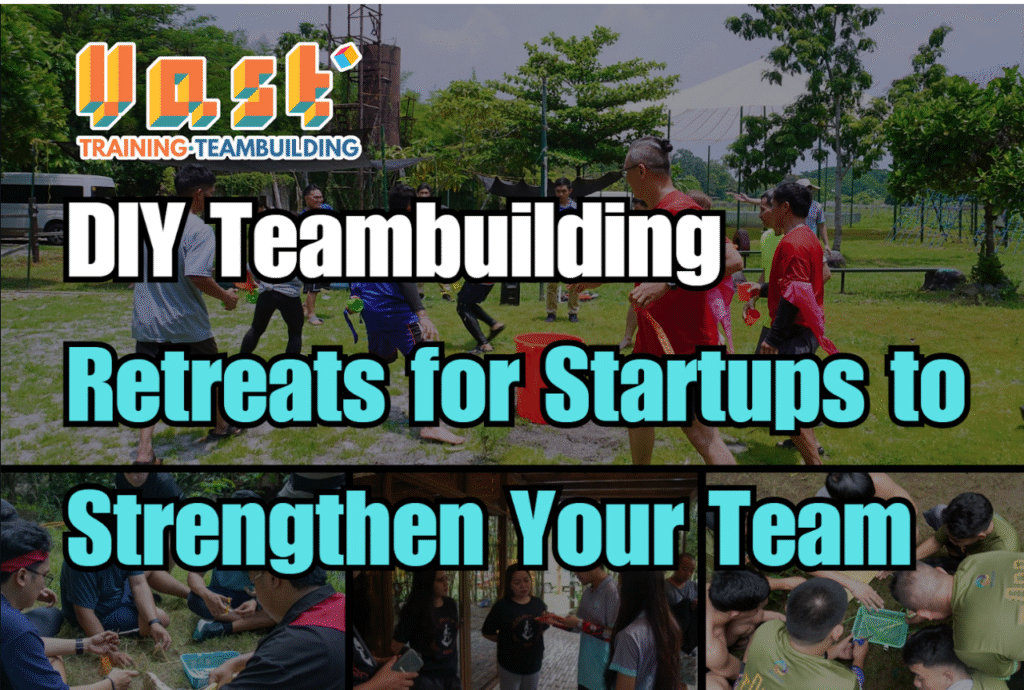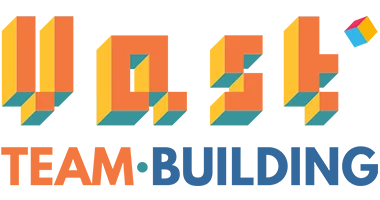Call us now at: (02) 8404 0361 | Ann +63 945 759 5473 | John +63 938 432 8515 | Kate +63 961 644 8032 | Ed +63 917 302 9763 | Email: inquiry@vast3teambuilding.com | corporate@vast3teambuilding.com



Building a strong, cohesive team is critical for any startup, especially in the early stages when collaboration and communication can make or break the business. While there are countless team building programs and retreats available, organizing a DIY team building retreat can be a more cost-effective and personalized way to engage your team. In this blog, we’ll explore how startups can plan their own team building retreats that focus on fostering creativity, improving collaboration, and strengthening team bonds.
In a startup, every team member plays a pivotal role. As a founder or leader, you know that creating a supportive, collaborative, and trusting environment can be the difference between success and failure. Teambuilding retreats provide an opportunity to step away from the daily grind and focus on strengthening relationships, improving communication, and boosting morale. It’s a chance to get to know one another outside of the office and to align on shared values and goals.
For startups on a budget, DIY teambuilding retreats offer an affordable solution that still delivers big results. Instead of spending large sums on external facilitators, venues, or corporate retreats, you can organize an event that fits your unique team dynamics and objectives.
Before diving into logistics, clearly define the purpose of your retreat. Are you aiming to improve communication, build trust, enhance creativity, or perhaps foster better collaboration? Having a clear goal will help you choose the right activities and structure the retreat around achieving these objectives.
Choosing the right location is key to setting the right tone for your retreat. The environment should encourage relaxation, creativity, and openness. This could be as simple as an off-site meeting room, a cabin in the woods, a beachside getaway, or even a nearby park for a day of outdoor activities. The key is to select a space that offers a break from the usual office setting, promoting an atmosphere of relaxation and team bonding.
A successful retreat has a balance of structured activities and downtime. Plan out a series of activities that address the team’s specific needs and objectives. Some examples include:
If your team is dealing with specific challenges such as communication issues, conflict resolution, or leadership development, consider incorporating a short workshop led by an internal or external facilitator. Workshops can be interactive and tailored to meet the needs of your startup.
While team-building activities are important, don’t forget to incorporate fun and relaxed moments into the retreat. A retreat should feel like a break from the daily grind, so include activities like friendly competitions, games, or creative group challenges. Encouraging your team to have fun while working together creates positive experiences and deepens team connections.
Once the retreat is over, ask your team for feedback on what worked well and what could be improved. This will give you valuable insights into how your team is feeling and help you plan better retreats in the future. It also shows your team that you value their opinions and are committed to their growth and development.
Instead of traditional indoor activities, get your team out of the office and into nature. Plan a day of hiking, zip-lining, or even an obstacle course. These physical challenges build trust, teamwork, and resilience, all while creating lasting memories.
Turn your retreat into a mini-hackathon where teams are given a real-world problem your startup is facing (it could be anything from improving customer experience to developing a new product feature). They’ll work in groups, brainstorming solutions and pitching their ideas to the rest of the team. This fosters innovation, creative thinking, and strengthens team collaboration.
Get everyone involved by splitting into teams and cooking a meal together. This could be a competition where each group has to make a dish using limited ingredients, or you could make it more relaxed with a team-building dinner where everyone contributes to different parts of the meal. It’s a fun, hands-on way to encourage collaboration and creativity.
Improvisational games can break down barriers and improve communication skills. Try activities like “Yes, and…” where team members build off each other’s ideas or “One Word Story” where everyone adds one word at a time to create a collaborative story. These games help foster creativity, trust, and listening skills.
Create a scavenger hunt in your city or nature that incorporates startup-related tasks and challenges. For example, team members might have to take a picture at a certain landmark, solve a puzzle related to the company’s mission, or conduct a mini-interview with a local business owner. This is not only fun but also encourages strategic thinking, teamwork, and problem-solving.
Help your team align on company goals and personal aspirations with a DIY vision board session. Provide magazines, scissors, markers, and glue, and have everyone create a vision board for what they hope to achieve, both individually and as a team. This encourages creativity while fostering a sense of shared purpose and vision for the future.
Instead of scheduled talks and workshops, try hosting an “unconference” where team members choose the topics they want to discuss. This can be about business growth, work culture, or personal development. It’s an informal way to allow everyone’s voice to be heard, and it sparks conversations that might not happen in a typical meeting setting.
Give your team an opportunity to unleash their creativity through a group art project. Whether it’s painting a mural together, working on a sculpture, or even a digital project, this shared artistic effort will promote collaboration and allow for creative expression. Plus, it’s a great icebreaker for team members who don’t always get to interact.
Sometimes, the best way to improve teamwork is through mental clarity. Organize a silent retreat day where your team engages in guided meditation, mindfulness exercises, or yoga. It’s a perfect way to reduce stress, clear the mind, and reset collectively before diving into work again.
A fun way to foster empathy and understanding among your team is through a “swap roles” day. Each person switches roles with someone else for a few hours—this could be swapping departments, responsibilities, or tasks. It gives everyone a deeper appreciation for the challenges and nuances of different roles within your startup.
These activities will not only help to foster strong communication and trust within your team but also create a lasting bond that improves collaboration in the workplace. A DIY retreat doesn’t have to be expensive or overly structured—just fun, creative, and aligned with your team’s values. Contact Us Now at (02) 8404 0361 and www.vast3teambuilding.com. Discover the Impact of Our Facilitation Expertise in Empowering Teams to Achieve Extraordinary Results.

We envision a vast improvement on organizational productivity and enrichment on each companies by giving the right value